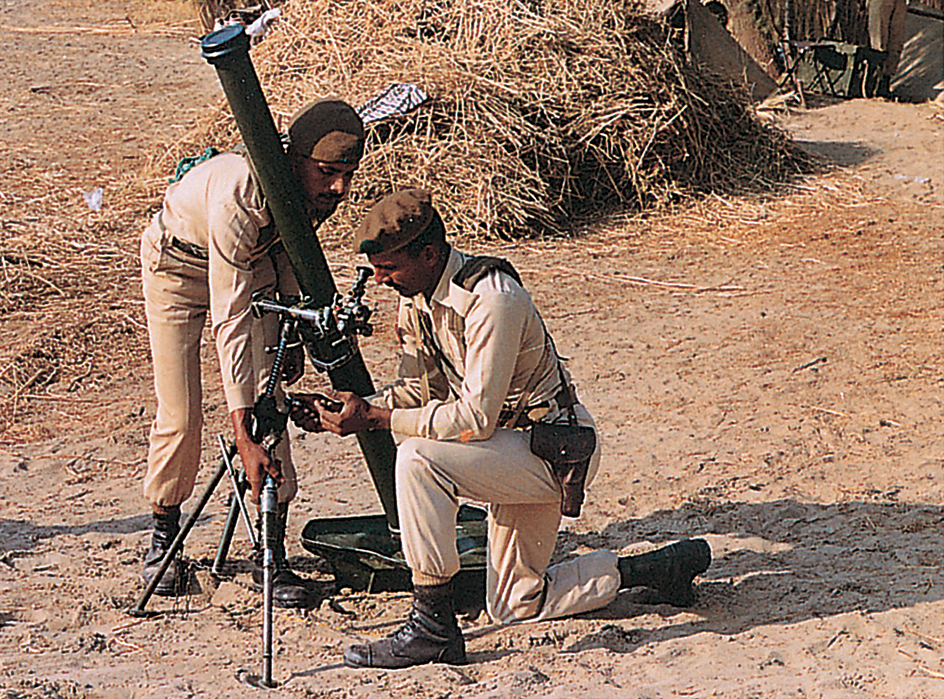Mortar is a short-range weapon that is used to reach nearby targets that are protected by hills or other obstacles. A mortar fires a shell on a high arc that enables it to clear obstacles. It has a higher angle of fire, shorter barrel, and lower muzzle velocity (speed) than a gun or a howitzer. Mortars are light, can be moved easily, and have great firepower. For example, the 81-millimeter mortar can fire an 11-pound (5-kilogram) shell nearly 3 miles (4.8 kilometers).

A mortar consists of a tube closed at the breech (bottom) end, that rests on a base plate. Two adjustable legs support the muzzle end. Soldiers fire the mortar by dropping the ammunition down the muzzle. When the ammunition reaches the bottom, it strikes the firing pin, which explodes the primer. Most mortar shells have fins to prevent them from tumbling in the air. Artillery mortars have bore diameters of 105 millimeters or larger. Infantry mortars have diameters that are less than 105 millimeters.
Before World War II (1939-1945), armies used heavy, stubby mortars. Large mortars were also used to defend coastlines. But howitzers have largely replaced these heavy mortars in present-day warfare. The lightweight and easily moved infantry mortar became an important weapon during World War II.
